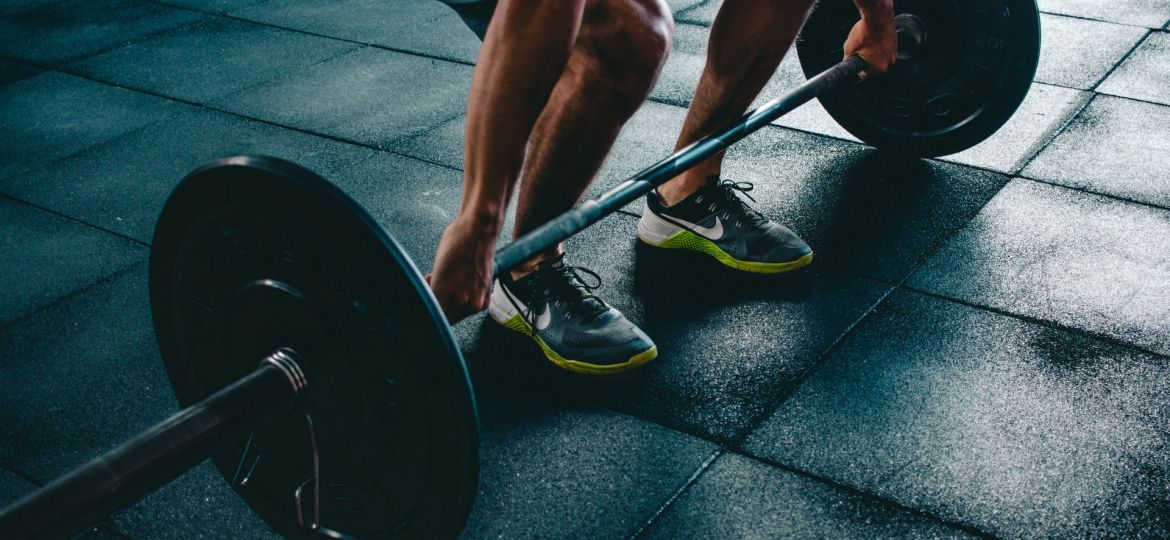
These expert tips will help everyone feel confident in the gym and keep progressing when things get a little easier.
- Focus on these five must-dos with weights at the gym or at home to keep your momentum going and progress faster.
- Warm-ups are the most important part of strength training. The heavier your sessions are, the longer your preparation should be.
- Naming each muscle as you activate it and engaging in other ways to be mindful will make your workouts more fun and easier to sustain.
Lift a weight. Lower. Repeat. Strength training can look simple if you just go for a round in the gym. But to really — and responsibly — make progress, you have to look at the bigger picture, says Ryan Flaherty, founder and host of Trained, a Nike podcast.
Flaherty has trained some of the greatest elite athletes including Serena Williams, Brooks Koepka and Saquon Barkley. In strength training, he focuses on five fundamental concepts that can help anyone get comfortable with weights and start making progress.
1. Warm-up before strength training
The most important part of strength training takes place before you even touch a weight. The purpose of a warm-up is also to literally raise your body’s core temperature and send more oxygen and blood to your muscles, giving them the energy and range of motion they need for your session. It also helps you create mental momentum.
Psst: the harder your workout, the longer your warm-up should be. But usually you can plan five to 15 minutes for a few sets of dynamic exercises, such as walking planks with a push-up, walking lunges with rotation, and a minute of jumping rope. do you sweat? You have to. During your workout, do a few warm-up sets before each exercise. Always increase the weight gradually, so that your muscles are prepared for the load.
2. Pay attention to your strength training technique
With good technique you prevent injuries and achieve better results. For lower body exercises, don’t let your knees pull together, but keep them directly over the middle toe of each foot. For upper body exercises, keep your chest straight and your shoulders down and back. And whatever you do, activate your core by pulling your navel toward your spine. In addition to these general guidelines, there are specific techniques for each exercise. If you have any questions, check with a trusted professional or source. The more self-confidence you have, the stronger your motivation, the better your progress.
3. Plan on progress
If you’re new to strength training or a particular move, you can start with three sets of 10 reps during your first week. Once a move starts to feel easy, it’s probably time to take it up a notch. As you get stronger, you can adjust the difficulty to suit your level, also to keep the momentum going. You can add weight, increase the number of reps or sets, or adjust your pace (more on that in the next section). All of this helps to develop your muscles and keep progressing.
4. Start with pace
When you’re ready to move to the next level, the first thing to look at is pace. By performing your movement more slowly, the ‘time under tension’, or the time a muscle is under tension during a rep, increases. At a slower pace, your muscles have to work longer and harder. Depending on the exercise, you may even need to use supporting muscles to maintain balance and control. But instead of slowing everything down evenly, you can split the exercise into two parts. Do the positive (raising) part just long enough to maintain good posture, and slow down the negative (lowering) part so that it takes at least twice as long. In a squat, for example, you can lower yourself in three seconds and raise yourself back up in just one second until you’re upright again.
5. Keep your attention
The next time you do a heavy set, focus on each breath. Or, during a compound exercise like a deadlift, name each muscle as you tighten it (abs, lateral muscles, glutes, quads, hamstrings, etc.). Focusing on the now during your workout, or keeping your attention there, affects your entire workout. You will then know when you have warmed up properly or when you have done enough. You may have more willpower to do that last rep. You will almost certainly improve your posture with it. And perhaps more importantly, you enjoy it more. And that’s what can motivate you to pick up those weights again and again.
Time for progress.
Source: https://www.nike.com/nl/a/de-basis-voor-slimmere-krachttraining

